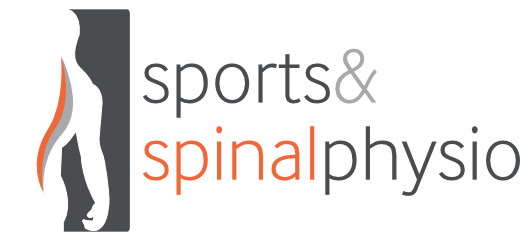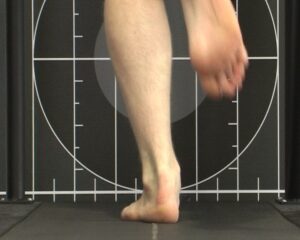News & Blog
Are You Fit To Run?
Have you taken up walking or running as part of a new years resolution? Or maybe you are competing in a marathon this year?
In the lead up to the various marathons taking place this year many thousands will develop a lower injury as a consequence of extra walking or running.
Walking aside, running doesn’t come naturally to most people and in our opinion only 5% of runners have the perfect “body set up” and are unlikely to suffer with injury.
So what causes lower limb injury?
- Poor biomechanics
- Incorrect training
- Increasing distance or frequency of training too rapidly
- Inappropriate footwear
- Trauma – ankle sprains etc..
In this article we are going to look at how we can observe, analyse and correct faulty biomechanics that contribute to the onset of injury.
Biomechanics refers to how the body functions from a mechanical point of view.
The above photo shows a pronated foot during mid stance – Foot and Ankle, Achilles tendonitis, shin splints and knee problems are related to this dysfunctional position.
A positive Trendelenberg sign on left hip – this can cause knee, hip and back problems – including patello-femoral pain syndrome, lumbar disc problems, bursitis, muscle and tendon injury.
At the clinic we are able to video our patient’s walking or running and using the footage we can analyse the movement of the leg and foot to diagnose faulty biomechanics.
How is this different from what they provide at sports shops?
Sports shops are simply looking to sell you the most appropriate trainer. They are looking for 3 possible foot type and function:
- A flat-ish foot that foot rolls in – “you over pronate and need a stability or motion control shoe”.
- A high instep that does not roll in – “you need a cushioned shoe”
- A “normal looking foot that does neither to great excess – “you are a neutral runner – you need a neutral shoe”.
Video analysis at our clinic provides us with additional information that we use to devise treatment rehabilitation programmes. Here are some of the additional areas we might identify as being a problem:
- Your gluteals (hip muscles) are not working and your pelvis is dropping to one side. This predisposes you to back, hip and knee injury, is very common and is probably the biggest cause of lower limb injury. This requires specific exercises.
- Your calf muscles are tight or your ankle is stiff – you may need a heel raise in your shoe, to begin calf stretches or some hands on treatment.
- Your big toe is not bending enough – you may need this treating or something in your shoe to make up for the lack of bend.
- You knee is rotating inwards – normally due to a lack of hip control see point 1.
- Your trainers are the right type but they still don’t control your foot sufficiently – you require additional support in the form of a foot orthotic (insole). This is prescription based – we can provide this.
Bare Foot Running
If you are a barefoot runner or are considering switching to this style you may be thinking that footwear and orthotics don’t apply to you… wrong! There is a certain type of foot best suited to barefoot running.
Running barefoot with a forefoot strike pattern might actually be increasing your chance of injury – the running shop certainly won’t have the skill and knowledge to tell if this is you (we do). Besides if you don’t wear footwear you probably wouldn’t visit them anyway.
Key Points
- Too much or a sudden increase in walking and running can lead to injury
- There are multiple causes for lower limb pain and injury
- The way that our feet and legs move can cause injury and pain
- Biomechanical assessment can identify faults in our movement
- We can change the way our legs and feet move through exercise and the use of correct footwear and orthotic inserts.
To get a better understanding of your gait and biomechanics and to see if you are at risk book a video gait analysis with one of our clinicians.

